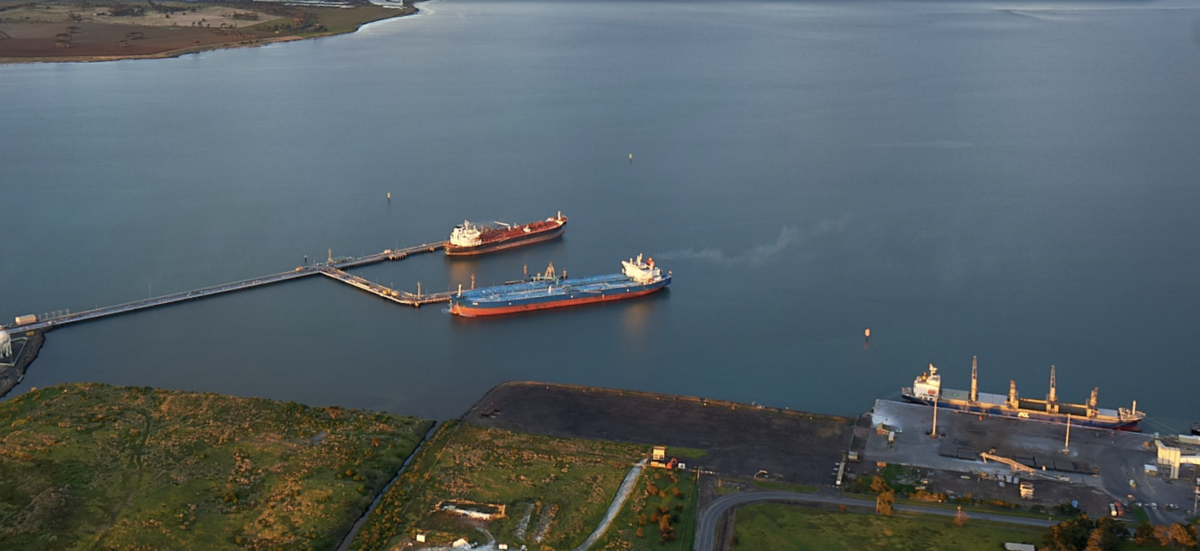GeelongPort, Australia’s sixth largest port, today announced it will expand its current operations with a $100 million investment to build the Geelong Hydrogen Hub. The port operation, which is owned by superfund SAS Trustee Corporation (also known as State Super) and Brookfield’s LINX Cargo Care Group, will develop the facility with Singapore-based biomass gasification outfit CAC-H2.
The hub will act as both a production and distribution facility, according to GeelongPort, though the facility’s capacity ambition has not been specified. Pending regulatory approvals, the first stage of the Geelong Hydrogen Hub is expected to be operational in December 2023, the company said.
The facility is describing itself a green hydrogen plant, though hydrogen produced from biomass gasification is yet to be assigned a “colour classification” by the International Energy Agency (IEA). Advocates argue it can be classified as green (renewable) hydrogen because technically energy produced with biomass is classed as renewable, though the inclusion of biomass there has been a heated point of debate.
Proponents of the biomass-to-hydrogen route argue it is superior because it can use, for instance, agricultural waste to produce hydrogen fuel. Critics are less convinced the budding biomass-to-hydrogen industry will actually confine itself to waste streams, and worry it could end up harvesting wood from forests as is suspected to be the case in the woodchip industries which have become colossal businesses in the United States and Europe in the last two decades.
CAC-H2’s carbon negative claims
Unlike woodchip industries however, gasification does not involve burning biomass like wood or agricultural waste to create energy. Rather, it gasifies biomass by placing it in a chamber and depriving it of oxygen while adding heat. The gas produced contains hydrogen, which is then separated out and sold.
CAC-H2 claims it process is carbon negative because it at the end it is left with biochar, an increasingly popular agricultural product which sequesters carbon in a stable form in the soil. CAC-H2 does however acknowledge that its process, unlike hydrogen made from from renewably-powered electrolysis, produces two greenhouses: carbon dioxide and nitrogen.
CAC-H2 Director Arman Massoumi told pv magazine Australia in October that its gasification units generally output about 20% hydrogen, 50% nitrogen and 20% carbon dioxide. Massoumi said the company will likely release the nitrogen into the atmosphere because it has a low market value, while the CO2 will be emitted “into a greenhouse farm” or otherwise used or sequestered.
In terms of what this means for the process’ green status, pv magazine Australia has been told CAC-H2 has already met with CSIRO to discuss a carbon lifecycle assessment of its processes. It is seeking to demonstrate its emissions will be negative “or net zero at worst.”
The company also said it has been in discussions with the Smart Energy Council to be included in the Council’s Zero Carbon Certification Scheme. CAC-H2 will also reportedly be contacting the Clean Energy Regulator (CER) this week to discuss options for inclusion in the hydrogen certification scheme it has on the horizon.
Cheaper than electrolysis
It is worth noting CAC-H2 also claims its process can produce hydrogen for significantly less than that made via an electrolyser. The company is confident it can reach Australia’s stretch goal of producing a kilogram of hydrogen for under $2 (H2 for $2) before 2030.
This promise of carbon negative hydrogen for cheap has proven extremely popular with major companies throughout Australia. CAC-H2 was only established in mid-2021 and has already announced joint venture partnerships on at least three massive hydrogen projects, including with sawmill operation Sweetmans, Clean Holdings proprietary limited, and with Patriot Hydrogen.
Geelong Hydrogen Hub
Unsurprisingly, the Geelong Hydrogen Hub is targeting the export market, saying it plans to convert the hydrogen to ammonia for export into Asia.
GeelongPort has also partnered with Startupbootcamp’s Greater Geelong Hydrogen Technology cluster and is engaging with interested parties to identify future partnership opportunities in developing the Geelong Hydrogen Hub at GeelongPort.
In terms of Geelong more generally, which sits about an hours drive southwest from Melbourne city, Viva Energy Australia announced earlier this year that it is moving to transform its Geelong oil refinery, which currently struggling to transition to an LNG terminal, into an energy hub featuring solar and hydrogen.
Greater Geelong is part of National Energy Resources Australia’s (NERA) Australia-wide hydrogen technology clusters.
* This article was amended on 30 November to include additional comment from CAC-H2 and GeelongPort regarding the gasification process’ carbon lifecycle assessment and green certification.
This content is protected by copyright and may not be reused. If you want to cooperate with us and would like to reuse some of our content, please contact: editors@pv-magazine.com.









By submitting this form you agree to pv magazine using your data for the purposes of publishing your comment.
Your personal data will only be disclosed or otherwise transmitted to third parties for the purposes of spam filtering or if this is necessary for technical maintenance of the website. Any other transfer to third parties will not take place unless this is justified on the basis of applicable data protection regulations or if pv magazine is legally obliged to do so.
You may revoke this consent at any time with effect for the future, in which case your personal data will be deleted immediately. Otherwise, your data will be deleted if pv magazine has processed your request or the purpose of data storage is fulfilled.
Further information on data privacy can be found in our Data Protection Policy.